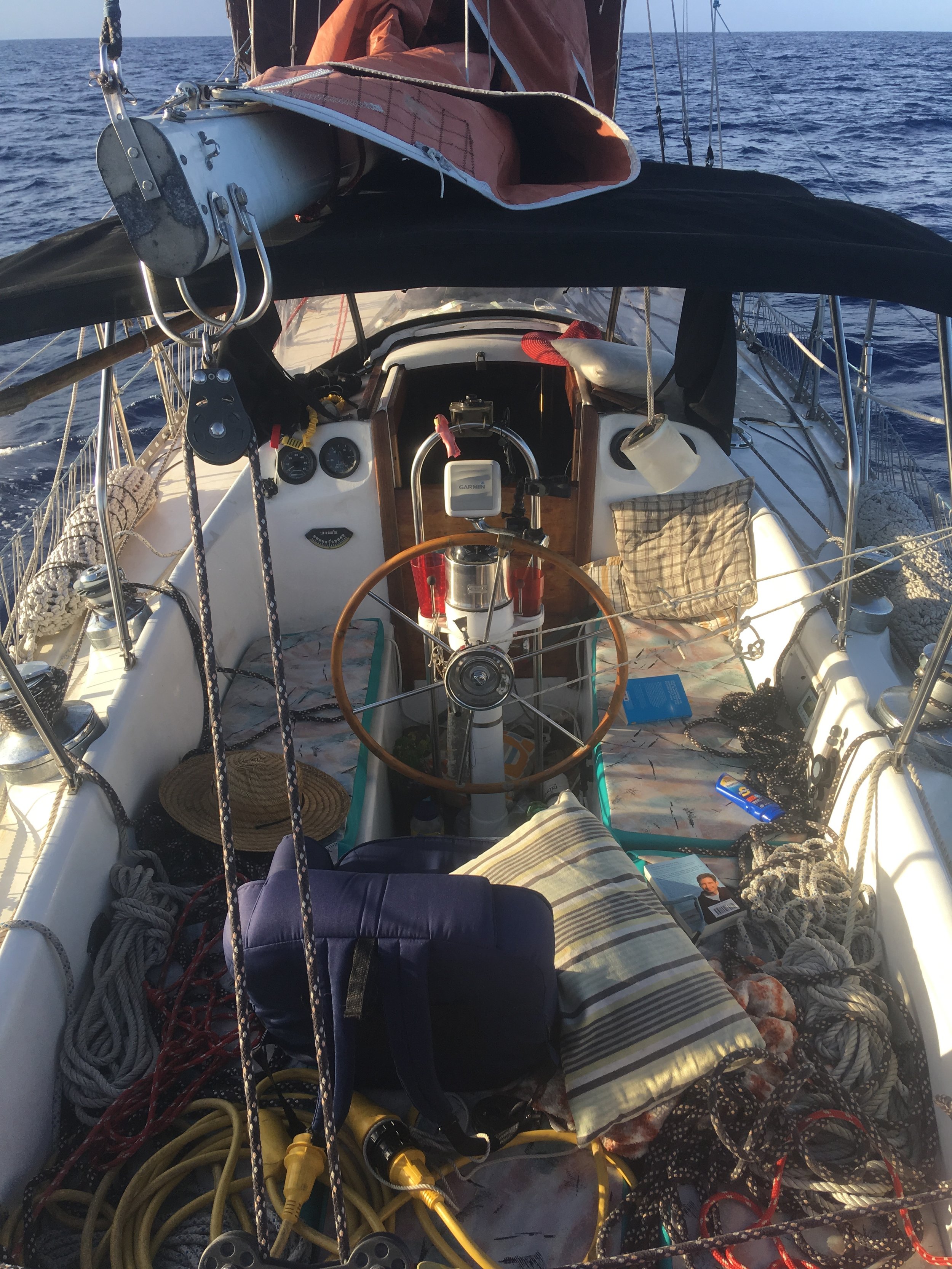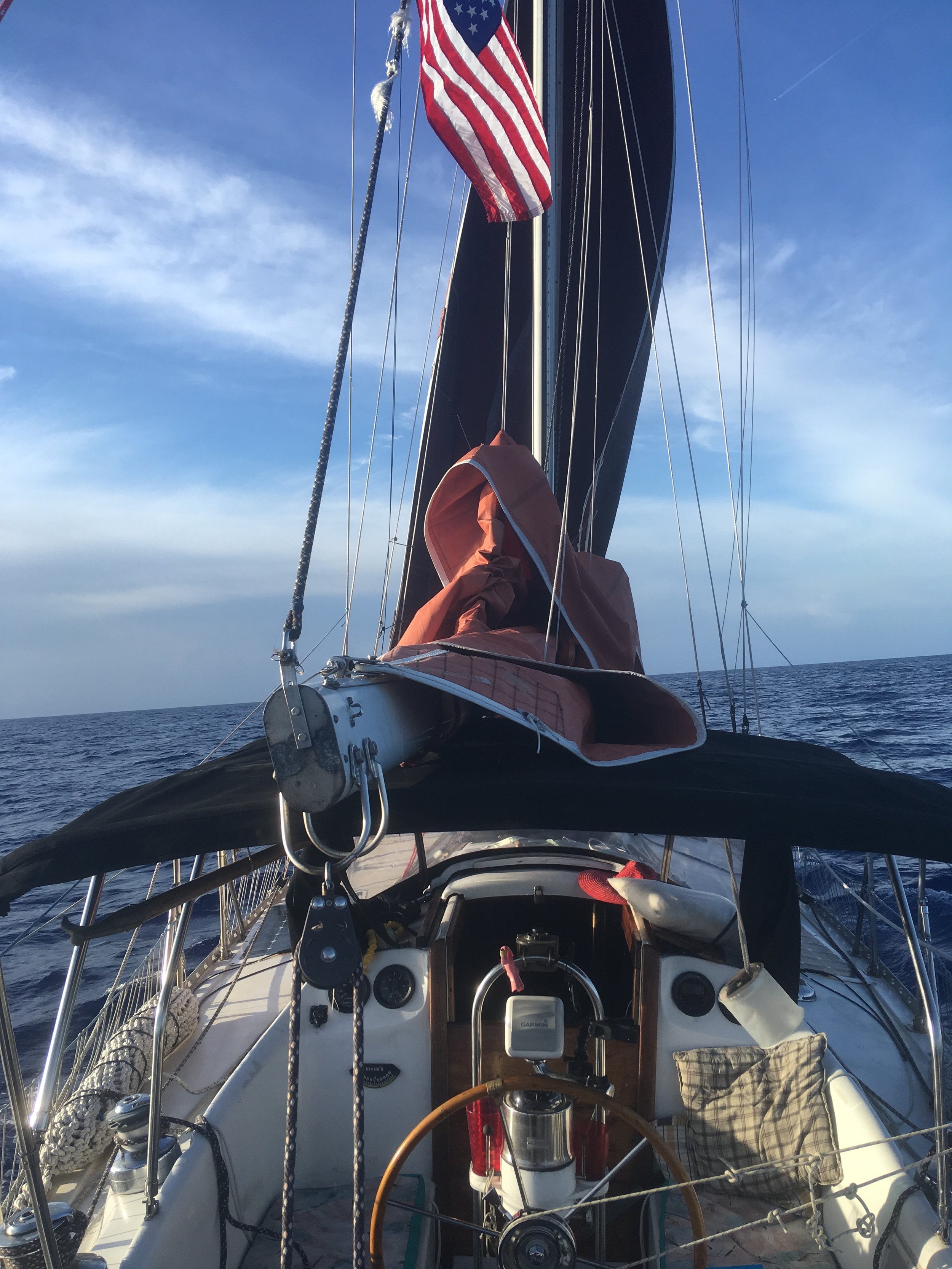Out at sea, time is no longer as much of a thing to you. There are no deadlines, there are no schedules, you simply are where you are when you are. For this reason, the second week is actually 10 days long.
We have come so far, yet gone no where.
Last week, we were floating around the Bahamas, this week we are floating closer to Bermuda. We crossed the Doldrums, and gained some wind, but yet we are still out in the middle of the ocean with no sight of land.
Yesterday, the view was waves in all directions.
Today, the view is waves in all directions.
Tomorrow, the view will still be waves in all directions.
The sun rises and sets over a world completely covered by water, and we are merely passing through.



















